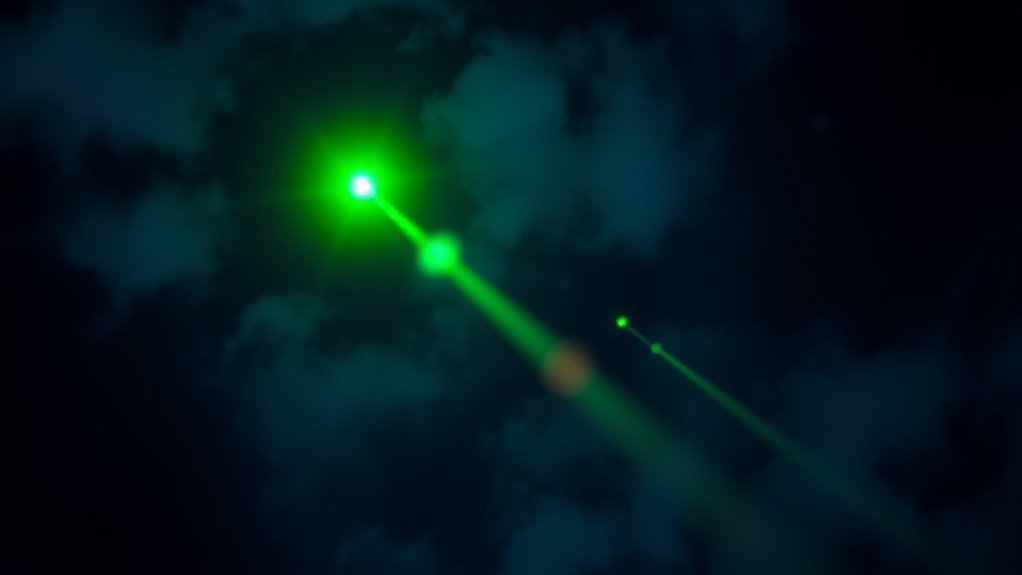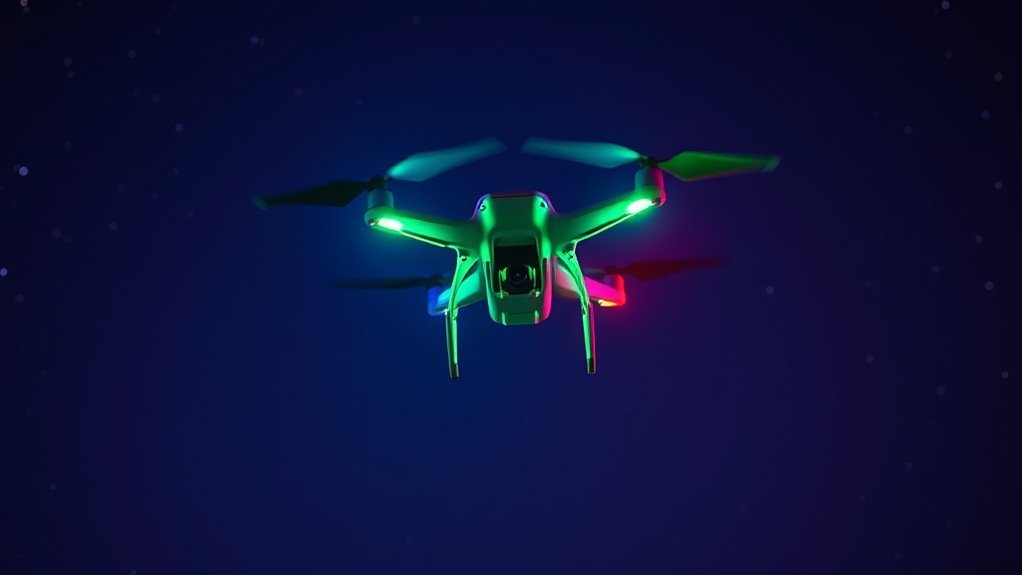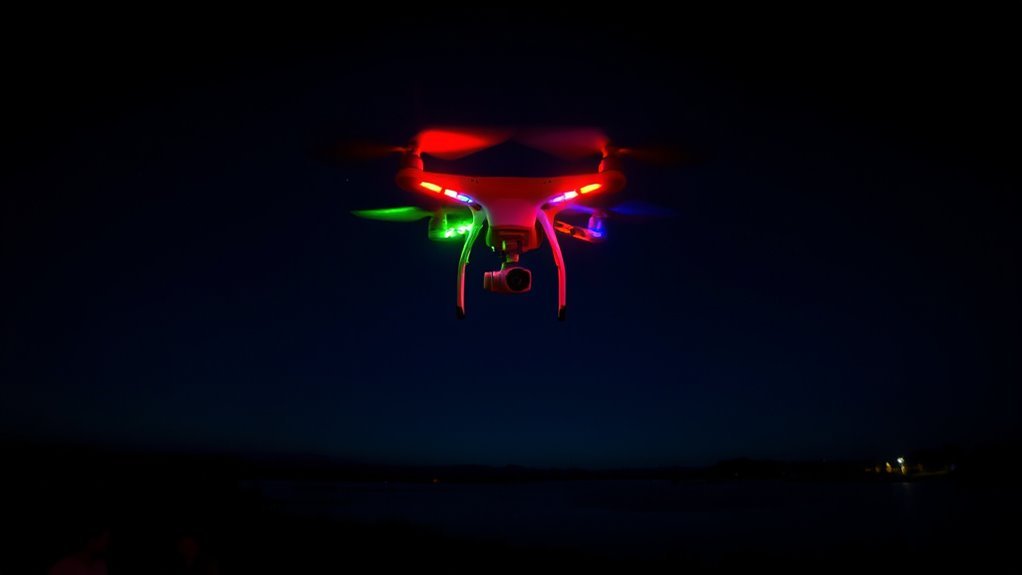Drone lights use red and green to show left and right sides for orientation, like aircraft navigation. White lights indicate power and readiness—solid means on, blinking means initializing. Blue lights signal controller connection status, solid for connected and blinking for searching. Amber often warns of caution or issues. Flashing patterns alert you to problems like low battery or GPS loss. These colors also meet strict legal visibility and safety standards. Understanding this guarantees safe, compliant operation and more insight into drone signaling.
Common Colors Used in Drone Lights

When you look at drone lights, you’ll notice a few standard colors consistently used to convey critical information. These drone light colors—typically white, blue, and amber—serve distinct functions essential for safe and effective drone operation. White lights guarantee maximum drone visibility importance, especially in low-light conditions, allowing you to track the drone’s position from a distance. Blue lights often signify system status or operational modes, providing immediate feedback without disrupting your control. Amber lights act as caution indicators, alerting to potential issues or restricted zones. Understanding these colors helps you maintain situational awareness and compliance, granting you the freedom to operate confidently while respecting airspace safety standards. Mastering this visual language enhances both your autonomy and the drone’s operational reliability.
Red and Green Lights: Orientation and Navigation

Two primary colors—red and green—are essential for drone orientation and navigation. These orientation signals help you determine the drone’s heading, with red lights typically positioned on the left (port) side and green lights on the right (starboard) side. This color-coding mimics marine and aviation navigation aids, providing a universal reference that guarantees you maintain spatial awareness during flight. By relying on these signals, you can confidently control your drone’s direction, especially in low-visibility or nighttime conditions. Understanding the placement and purpose of these lights empowers you to navigate with precision, maximizing your freedom to explore while maintaining safety and compliance with aviation standards. Red and green lights are not just indicators—they are critical tools that keep your drone aligned and your flight controlled.
White and Blue Lights: Status Indicators

Although red and green lights guide your drone’s orientation, white and blue lights serve a different, equally essential function by indicating the drone’s operational status. These status signals convey critical information about readiness, connectivity, and battery condition, empowering you to maintain control and freedom in flight. Understanding these color meanings guarantees you interpret your drone’s state promptly and accurately.
| Light Color | Status Signal | Meaning |
|---|---|---|
| White | Solid | Drone powered on, ready |
| White | Blinking | Initializing or calibrating |
| Blue | Solid | Connected to controller |
| Blue | Blinking | Signal searching or lost |
Flashing Lights and Their Significance
Because flashing lights often signal critical alerts or changes in drone status, understanding their meanings is fundamental for safe operation. Flashing patterns serve as concise communication tools, indicating modes such as low battery, GPS signal loss, or system errors. You’ll notice these patterns vary in frequency and color, providing immediate feedback without interrupting flight. Light synchronization guarantees consistent signals across multiple LEDs, preventing misinterpretation during complex maneuvers or multi-drone operations. This coordination allows you to quickly assess your drone’s condition and respond accordingly, preserving control freedom. Mastering these flashing cues empowers you to anticipate issues proactively, maintaining operational safety and maximizing flight autonomy without relying on external inputs or displays.
Safety and Legal Requirements for Drone Lighting
When operating a drone, you must comply with specific safety and legal requirements concerning lighting to guarantee visibility and prevent accidents. Adhering to drone regulations assures you’re flying responsibly while enjoying your freedom. Lighting compliance is critical, as improper or absent lighting can lead to serious legal consequences and compromise airspace safety.
Key requirements include:
- Use of anti-collision lights visible from at least 3 statute miles
- Operation only during authorized hours, typically from dusk to dawn
- Distinctive color coding (red, green, white) for orientation and identification
- Adherence to FAA or local aviation authority mandates on brightness and placement

